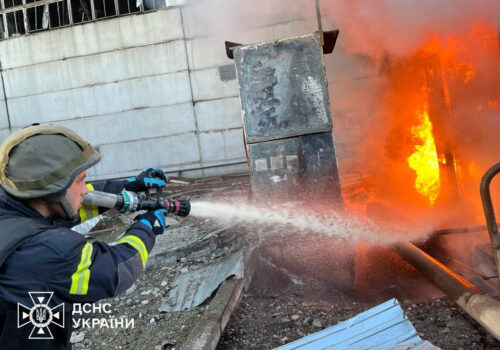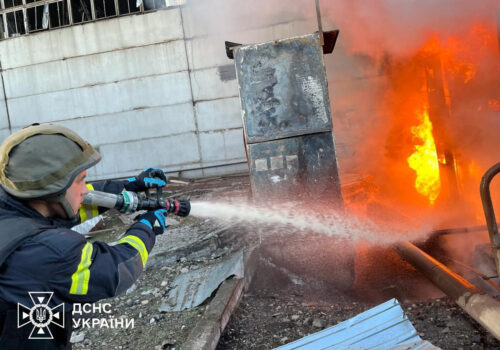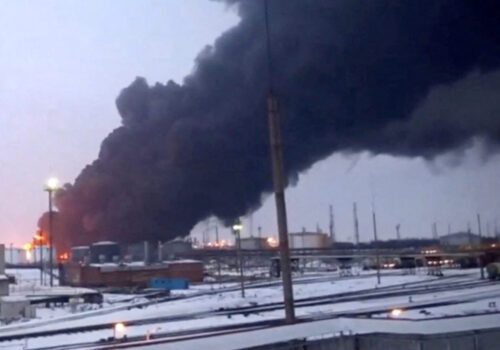
Organizing for victory

Ten years since Russia’s invasion of Ukraine began with the illegal annexation of Crimea, it is clear that a Russia containment strategy 2.0 is inevitable. I am convinced Ukraine will be our best partner for such a strategy in terms of intelligence, understanding of Russian psychology, and military defense. It will be a bulwark against Putin’s clearly articulated plans for further European conquest. Ukraine’s survival and the necessity of bringing it into NATO as soon as possible are paramount to a new European and global deterrence and containment strategy.
We are currently witnessing the continuing collapse of the USSR, which began in 1991. This process is not a straight-line decline, but it is unmistakable. Putin’s unprovoked war against Ukraine has undermined Russia’s economy and severed it from much of the West. His military has been exposed for its many shortcomings and corruption. Nearly all the former Soviet republics and Warsaw Pact members have turned their backs on Russia. Finland and Sweden have joined NATO.
We should not fear this Russian decline. In fact, we should seek to accelerate it by helping Ukraine defeat Russia and eject it back to its 1991 borders. Ukraine defeating Russia now is the best way to ensure NATO never has to fight directly against Russia. This is in our own strategic interest.
Does the West have the combined political will, industrial strength, and military capabilities to address the strategic challenges posed by Russia, Iran, North Korea, and China? These challenges are all linked and must be viewed as parts of a strategic whole, leading to the conclusion that it in the West’s interests to prioritize the defeat of Russia in Ukraine.
A “Russia first” approach would echo the example set by the allies during World War II. In 1942, British Prime Minister Winston Churchill and US President Franklin D. Roosevelt agreed on a “Germany first” strategy. One year later, they defined their war aim as the “unconditional surrender” of Nazi Germany and Imperial Japan. This provides a model for the kind of strategic clarity the current generation of Western leaders should be looking to emulate.
Stay updated
As the world watches the Russian invasion of Ukraine unfold, UkraineAlert delivers the best Atlantic Council expert insight and analysis on Ukraine twice a week directly to your inbox.
An assessment of today’s battlefield confirms that the Ukrainian military faces a very difficult situation. However, present narratives are overly gloomy and defeatist. After ten years of war, and despite holding every advantage, Russia still only controls just under twenty percent of Ukraine.
The Russian army has suffered hundreds of thousands of losses, while the weaknesses of the Russian navy and air force have been revealed. The Black Sea Fleet has lost around one-third of its ships and is in retreat from Sevastopol. The Russian Air Force has failed in its two main tasks of securing air superiority over Ukraine and cutting the supply lines bringing military equipment into Ukraine from the EU.
Much has been made of minor Russian victories such as the recent capture of Avdiivka, but these advances should be put in a proper geopolitical and operational context. Despite efforts by many of the doom-mongers to make it sound like Stalingrad, Avdiivka is in reality a small town located close to the 2022 front lines in eastern Ukraine. Indeed, it is currently far from clear whether the Russians have the operational capability to exploit even local tactical successes.
At this stage of the war, neither side appears capable of delivering a knockout blow. For Ukraine’s new military Commander-in-Chief Oleksandr Syrsky, the key task this year is to stabilize the situation in order to buy time, build combat power, and fix the country’s personnel system. Worn-out units need to be reconstituted and new units built. Training should include a focus on countering Russia’s advantages in electronic and drone warfare.
Eurasia Center events

What does Ukraine need in order to actually win? The Ukrainian military needs the capacity to make Crimea, the decisive terrain of this war, untenable for the Russian navy, air force, and logistics. Every square inch of Crimea is within ATACMS range. Ukraine has already proven the concept with a relatively small number of cruise missiles provided by Britain and France. This has made it possible to seriously damage the Black Sea Fleet HQ and naval maintenance capability in Sevastopol, forcing the fleet to partially withdraw to Russia. There are no good reasons for not providing Ukraine with ATACMS missiles, only excuses from an administration that is unwilling or unable to develop a strategy for Ukrainian victory.
The Ukrainian military also needs a long-range strike capability to neutralize the Russian army on land by destroying Russian troop concentrations, command posts, artillery, and logistics. Significantly enhanced air defense and counter-drone capabilities are essential, along with more naval drones and anti-ship missiles to allow Ukraine to build on the country’s remarkable success in the Battle of the Black Sea.
One of the most important steps toward securing Ukrainian victory is a clear declaration from the US and EU that it is in our own strategic interest to help Ukraine win. The failure of the current US administration to clearly explain this to the American people has led to incoherent and self-deterring policies along with incremental decision-making and a drip-feed approach to military aid for Ukraine. This has left the door open for disinformation and made it possible for a MAGA-led minority within the Republican Party to block aid despite majority support.
The current year is a year of industrial competition that the West can and must win. Western countries should collectively be dwarfing Russia’s output but there is currently a lack of urgency. Encouragingly, ammunition production is finally picking up some momentum in Europe and the US. We just need the US Congress to approve delivery. Meanwhile, EU nations must reassess their priorities and address the large percentage of ammunition production that is currently heading to customers outside Europe. Greater efforts are also required to source existing ample ammunition stockpiles globally.
The West needs a return to the clarity of Churchill and Roosevelt, who communicated clear strategic priorities to the public, industry, and the military. Identifying these priorities was a vital step, making it possible for the allies to organize the war effort and secure victory. The lessons of this approach should now be applied to the confrontation with Putin’s Russia, Iran, and China. At the end of the day, it’s all about political will and leaders speaking to their populations as adults.
Lieutenant General (Ret.) Ben Hodges is the former Commander of US Army Europe.
Further reading
The views expressed in UkraineAlert are solely those of the authors and do not necessarily reflect the views of the Atlantic Council, its staff, or its supporters.

The Eurasia Center’s mission is to enhance transatlantic cooperation in promoting stability, democratic values and prosperity in Eurasia, from Eastern Europe and Turkey in the West to the Caucasus, Russia and Central Asia in the East.
Follow us on social media
and support our work
Image: An employee works at a production line of 155 mm artillery shells at the plant of German company Rheinmetall, which produces weapons and ammunition for tanks and artillery, during a media tour in Unterluess, Germany, June 6, 2023. (REUTERS/Fabian Bimmer)




